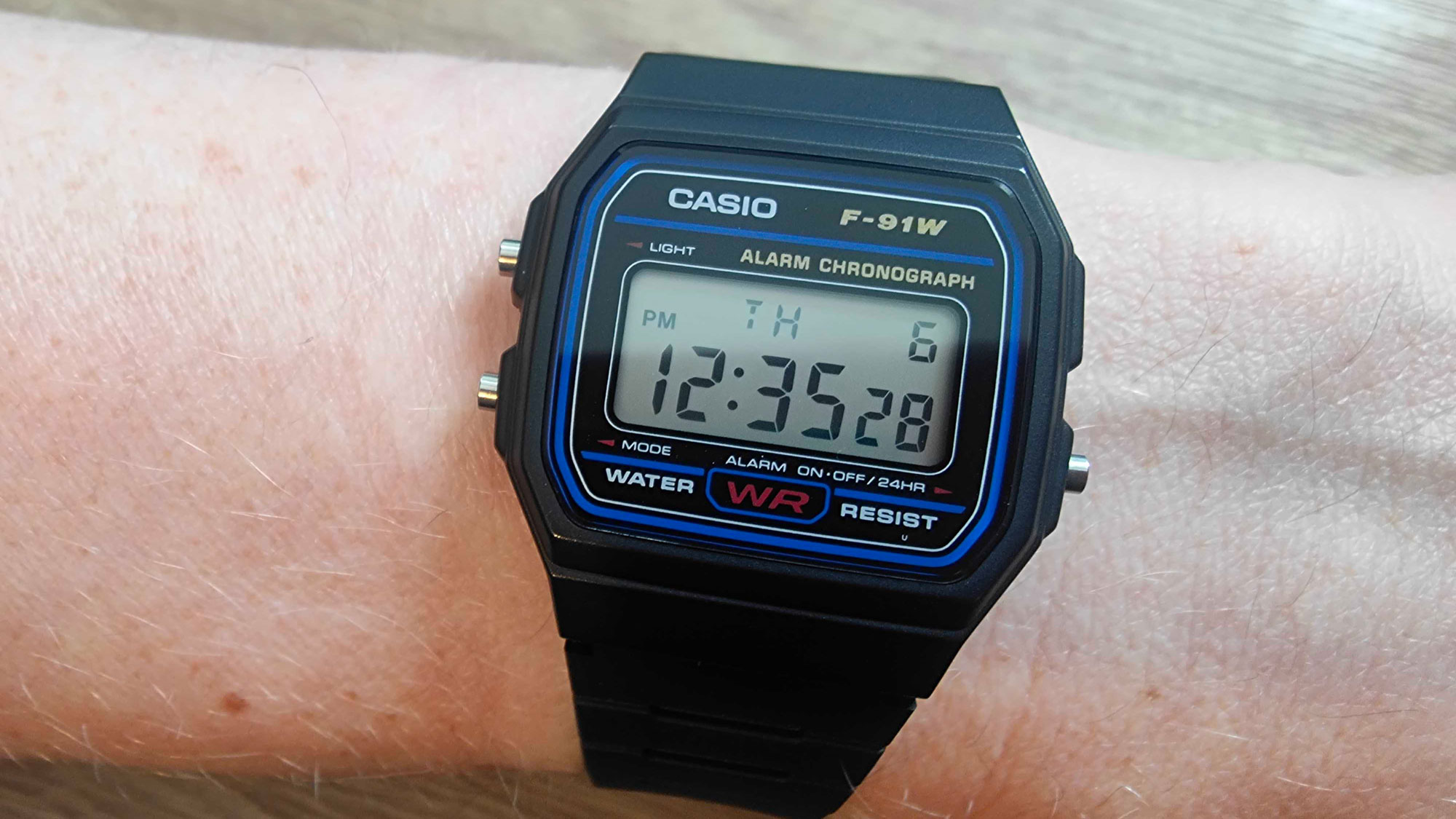Four months on, my super-cheap Casio watch is still the best $15 I've ever spent
Bored of smart tech? I'm still delighted by this $15 digital watch

I test some of the biggest, baddest, most expensive smartwatches in the world, and I really like my job. Being able to check out the ground contact time of my feet while I run, or my skin temperature while I sleep is fascinating to me.
The last watch I tested was the Garmin Epix Pro, sure to join the ranks of our best Garmin watch list, a marvel of smart engineering costing a hefty $899.99 / £829.99 / AU$$1,529. However, the moment it was off my wrist, I slipped on a cheap bit of plastic worth around $15: my now-beloved Casio F-91W.
This is the latest in a regular series of articles in which we test really cheap gadgets to see if they're worth even the small price you'll pay for them. Read them all here.
When I first bought the Casio, I wrote an article about its history, from hipster counterculture and Barack Obama to its use as a bomb-timer, and how its status as the ultimate affordable, reliable digital watch ensured I’d use it for a long time to come. After all, it’s supposed to last around seven years.
Well, I’m happy to report I wasn’t just blowing smoke and infatuated with a new purchase. Four months on, and I’m still using my $15 / £13 / AU$25 strip of plastic as much as any other watch, at least when I’m not reviewing, and still not-so-secretly delighted every time I put it on. Yes, it’s cheap and it looks it. No, I don’t care. I love it and find it useful.
| Component | Value |
| Price: | $15 / £13 / AU$25 (bought for £13.95) |
| Dimensions: | 37.5 x 35.2 x 8.5 mm |
| Weight: | 21g |
| Display: | Resin glass |
| Case/bezel: | Plastic, resin |
| Battery life: | Around seven years |
| Water resistant: | Splash resistant |
I’ve been taking care of it, of course. Lots of people online say it’s fully water resistant, but they seem to be going by the “water resist” message on the case. The watch is unchanged since its debut in 1989, and the official wording by Casio is that the F-91W is “splash resistant” by modern standards. It’s fine in the rain, for example, but I’ve certainly not been wearing it in the sea or in the shower as I would with other rugged G-Shocks.
Otherwise, it’s proven - as predicted when I first wrote about it - to be the perfect ‘knockabout’ watch. In the gym, I’ve been using the stopwatch to time my between-set rest periods, and monitor how long I do core exercises such as the plank push-up. I’ve been using its discreet alarm to get me up in the morning when I’m not at home.
I used to set my phone as a backup, but I have no anxiety about the watch running out of charge as I do when I rely on my phone. My watch proved so reliable, it’s become the only alarm I set when I don’t have my usual sunrise clock.
Sign up for breaking news, reviews, opinion, top tech deals, and more.

In fact, it’s the only watch I take on holiday, apart from a few anxieties about taking one to the airport, due to its suspect history. I don’t need to pack a charger, I don’t need to worry about winding it, and I certainly don’t have to stress if it gets lost or damaged.
I’ve grown fond of it, and it’s a conversation starter if it’s noticed. Sure, I get a couple of disparaging comments (“you review smartwatches, and you’re wearing that?” said one person, when I told them what I do for a living) but I like the retro charm of it and it’s not worn in formal settings.
It’s such an antithesis to the stuff I review for a living, putting it on almost feels like taking a weight off, which is probably why I wear it on holiday. Just enough functionality to remain useful day-to-day, with no battery anxieties, Whatsapp notifications, or the old “you’ve been sitting for too long” klaxon when I’m two-thirds of the way through a movie.
Last time, I said “this is its place in the modern world: a temporary reprieve from rampant consumer culture, constant connectivity, and an increasing amount of black screens in your life. The initial buy-in is incredibly small, it asks nothing from you, and it'll be there for years whenever you need it.” Four months on, nothing has changed. It’ll never fully replace any of the best smartwatches, of course, but it’s there whenever you want a small piece of that 90s’ connectivity-free joy.

Matt is TechRadar's expert on all things fitness, wellness and wearable tech.
A former staffer at Men's Health, he holds a Master's Degree in journalism from Cardiff and has written for brands like Runner's World, Women's Health, Men's Fitness, LiveScience and Fit&Well on everything fitness tech, exercise, nutrition and mental wellbeing.
Matt's a keen runner, ex-kickboxer, not averse to the odd yoga flow, and insists everyone should stretch every morning. When he’s not training or writing about health and fitness, he can be found reading doorstop-thick fantasy books with lots of fictional maps in them.